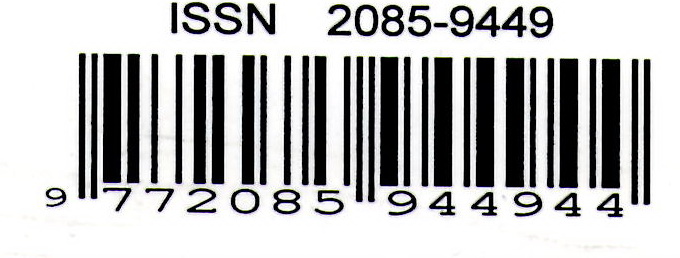Daily Behavior Of Estuary Crocodiles (Crocodylus porosus, Schneider 1801) In The Crocodile Capture, Balikpapan City, East Kalimantan Province
Abstract
Saltwater crocodile or Crocodylus porosus, is the largest crocodile species in the world. This reptile is not only living in the river as main habitat, but also near the sea, especially at the estuary area. The purpose of this research was to determine the daily behaviour of saltwater crocodiles based on their sex and age. This research was using Continuos Watching Method. The observed variable of behaviour are body movement, feeding, basking, and social in Teritip Crocodile Farm, Balikpapan, East Kalimantan. Chi-Square test showed that the observed object behaviour has differences in activities frequency and population density. In the moving behavior, adult male and teenage crocodiles (both male and female), are more active than female mature crocodiles. In the feeding behavior, hunting has the same way, that is by pouncing abruptly. Differences exist in the way they pounce on prey bodies (at the head, full body, or another body parts), as well as the selection of places to eat food (at land or water surface). In the basking behavior, the differences are seen when they are choosing the sundeck (at land or water surface) and the activities they do while basking (open or close his mouth). In the social behavior, teenage crocodiles are more actively fighting than adult. Meanwhile, adult crocodiles are active in dominance aspects while teenage do not. Specifically, female adult crocodiles are active in vocalizing and keeping the nest, while adult and teenage crocodiles are not.
Keywords
Full Text:
PDFReferences
Arie Susanti. 2010. Pengelolaan Penangkaran Buaya Di CV. Surya Raya Balikpapan, Kalimantan Timur (Skripsi). Bogor: Institut Pertanian Bogor.
Britton, A. 2002. Crocodylus Porosus (Scneider, 1801). http://www.flmnh.ufl.edu/cnch/csp-cpor.htm. (17 Januari 2017).
CITES (Convention on International Trade Endangered Spesies of Wild Fauna and Flora). 2010. http://www.cites.org/eng/app/Appendices-E.pdf. [19 Januari 2017].
Dodhi Harjianto. 2003. Studi Perilaku Makan Buaya (Crocodylus porosus) Di Penangkaran, Kelurahan Teritip, Kota Balikpapan (Skripsi). Samarinda: Fakultas Kehutanan Universitas Mulawarman.
Gans, C. 1985. Biology of The Reptiles. Vol 14. John Wiley and Sons inc. New York.
Hoeve, van. 2003. Ensiklopedia Indonesia Seri Fauna Reptilia dan Amfibia. Jakarta: PT Ikrar Mandiriabadi.
Peraturan Pemerintah Nomor 8. 1999. Tentang Pemanfaatan Jenis Tumbuhan dan Satwaliar. Jakarta. http://ksda-bali.go.id/wp-content/uploads/2009/05/pp-no8-tahun-1999-tentang-pemanfaatan-tsl.pdf. [15 Januari 2017].
Ross, C. A. 1989. Crocodiles and Alligators. Facts on Files. New York. Pp. 76 – 153.
Sandjojo I. 1982. Studi Kemungkinan Usaha Penangkaran Buaya (Skripsi). Bogor. Departemen Manajemen Hutan Fakultas Kehutanan. Institut Pertanian Bogor.
Seebacher, F. dan Murray, S. A. 2007. Transient Receptor Potential Ion Channels Control Thermoregulatory Behaviour in Reptiles. Plos One, 2 (3): e281.
Setio, P., Fanani, M., Subekti, P., Tony, F., Prima, N. dan Rury E. 2010. Perilaku Harian Buaya muara (Crocodylus porosus, Schneider 1801) di Pusat Penyelamatan Satwa Jogja. Biota. Vol. 15. (2) 188-194.
Webb, Grahame J.W. dkk. 2010. Saltwater Crocodile Crocodylus porosus. Australia: Wildlife Management International Pty. Limited.
Refbacks
- There are currently no refbacks.
Copyright (c) 2021 Jurnal Aquarine
Jurnal Aquarine (JAQ) / ISSN : 2085-9449
Organized by - Mulawarman University
Email : jurnal.aquarine@gmail.com

Jurnal Aquarine (JAQ)is licensed under a Creative Commons Attribution-ShareAlike 4.0 International License.





